
El Verbascum It is a plant that produces a long flower stalk in spring to summer, full of beautiful and cheerful flowers. Due to its height, it is ideal for growing in the garden, or in pots with relatively wide and deep drainage holes.
Its maintenance is quite simple, since the care it requires is very basic. In addition, as it resists frost, you will not have to worry if the temperature in your area drops below zero degrees.
Origin and characteristics of Verbascum
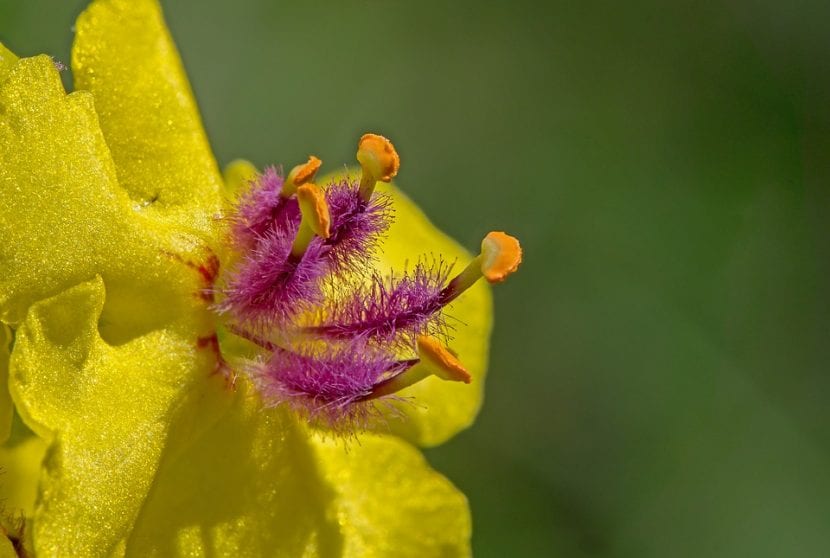
The genus Verbascum is made up of about 250 biennial or perennial plants native to Asia and Europe, found mainly in the Mediterranean region. They can reach a height of between 0,5 and 3 meters, with spirally arranged leaves which are often densely hairy.. The flowers sprout from a stem in spring, are composed of five petals, and can be yellow, orange, blue, white, or red-brownish. The fruit is a capsule that contains numerous seeds.
Biennial species, during the first year germinate and grow, and the second flower, fructify and die; perennials, on the other hand, bloom every spring (and for several years) until the end of their lives.
Main species
The most important ones are:
Mullein thapsus
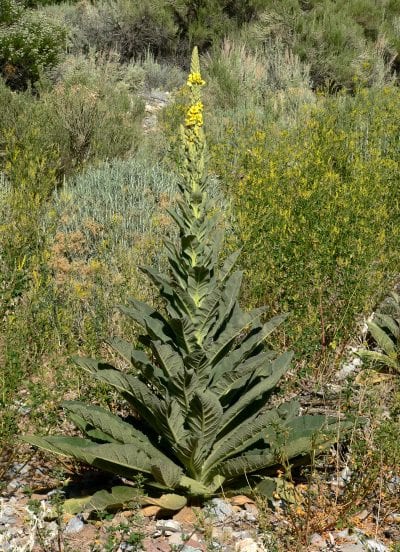
Image - Wikimedia / Stan Shebs
Known as verbasco or mullein, it is a biennial herbaceous 2 meters high native to Europe, Western Asia, Africa, North America, and the Himalayas. The leaves are up to 20 centimeters long, and are oval-lanceolate, alternate, and have a white or silver down. The flower stalk is 1 to 2 meters tall, and yellow flowers sprout from it.
Uses
- A pigment is extracted from the flowers that is used to dye hair blonde.
- In mother tincture it has expectorant and mucolytic properties.
- And in infusion, it is used against asthma and bronchitis.
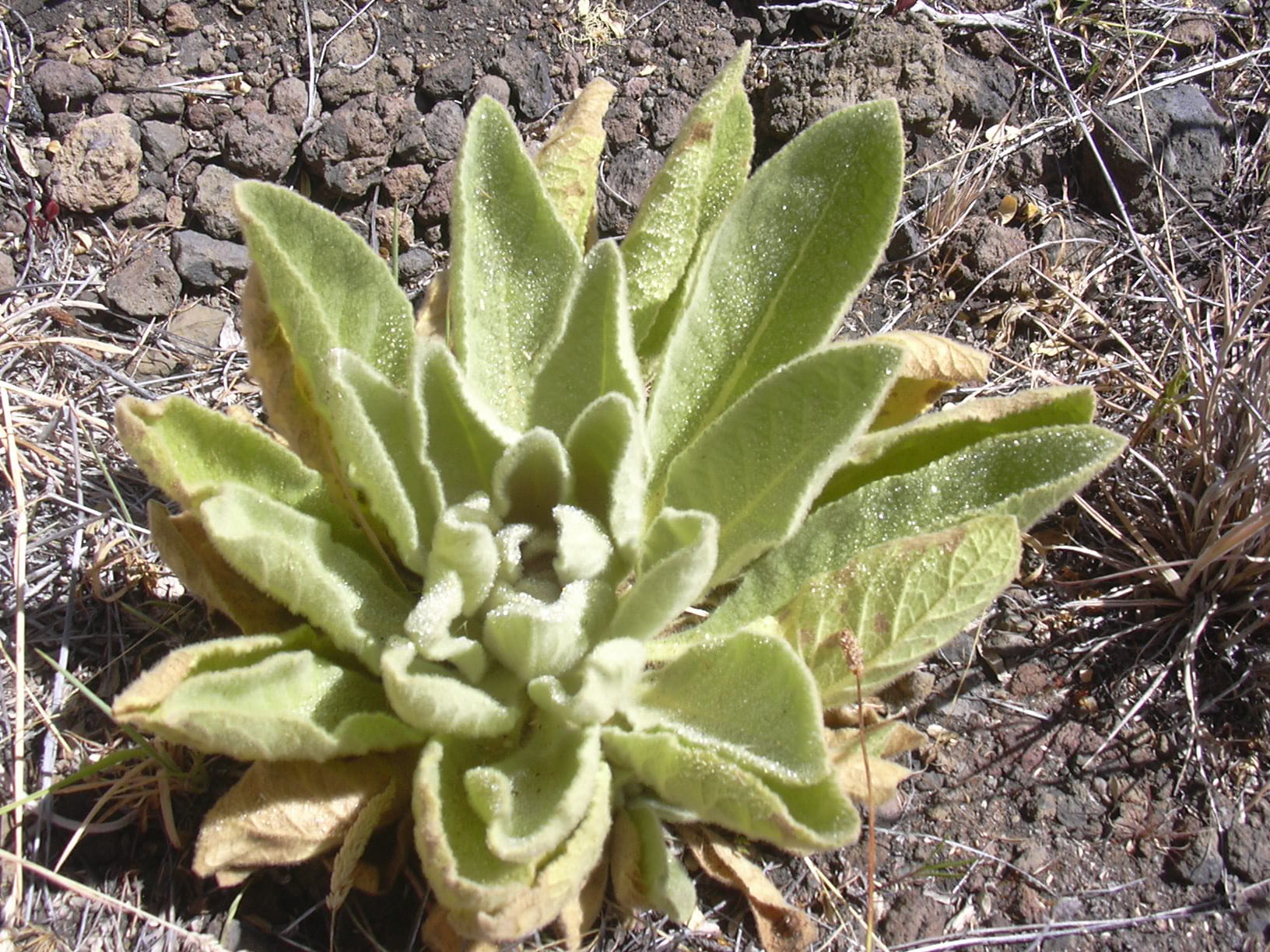
Verbascum pulverulentum
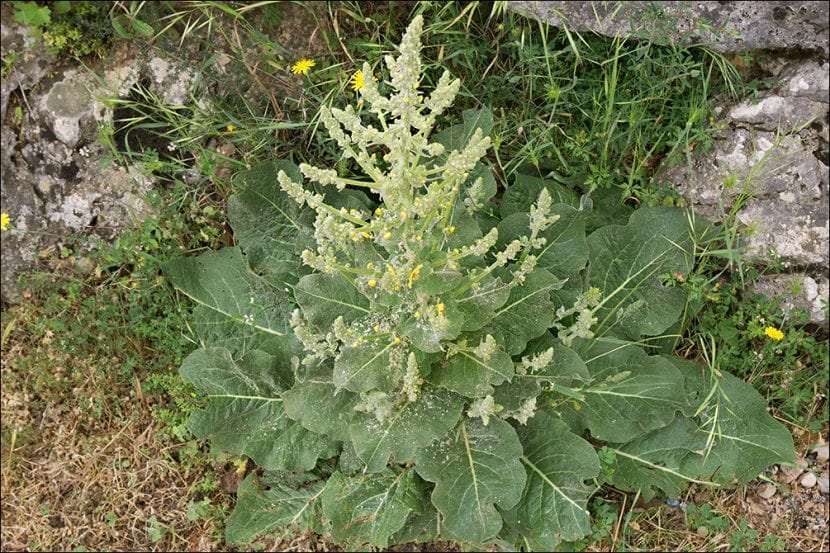
Image - Flickr / amadej2008
Known as mullein, it is a biennial herbaceous plant native to central and southern Europe that reaches a height of up to 2 meters. The leaves are 10cm long by 15cm wide, and the flower stalk can measure up to 200cm, although it is normal not to exceed 130cm. The flowers are yellow, and they gather in small groups.
Uses
- From the flowers a dye is extracted that is used to dye the hair, just like the previous species.
- The leaves are used as a wick.
If you have cows, sheep, among others, you should know that it is toxic to livestock.
Verbascum sinuatum
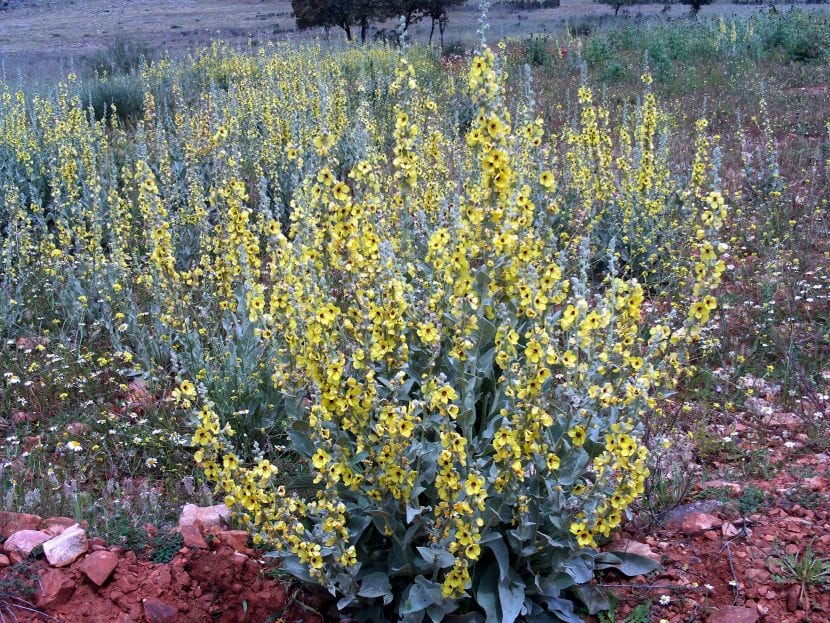
Known as bordolobo, romanza, acigutre, or candelera, it is a biennial plant native to southern Europe and North Africa to Iran that reaches a height of 1-1,5 meters. The leaves are large, lobed and wavy, up to 20cm long covered by a velvety fluff. The flower stalk is up to 1 meter long, and yellow flowers sprout from it.
Uses
The root is used as a healing agent and to alleviate the symptoms of respiratory diseases.
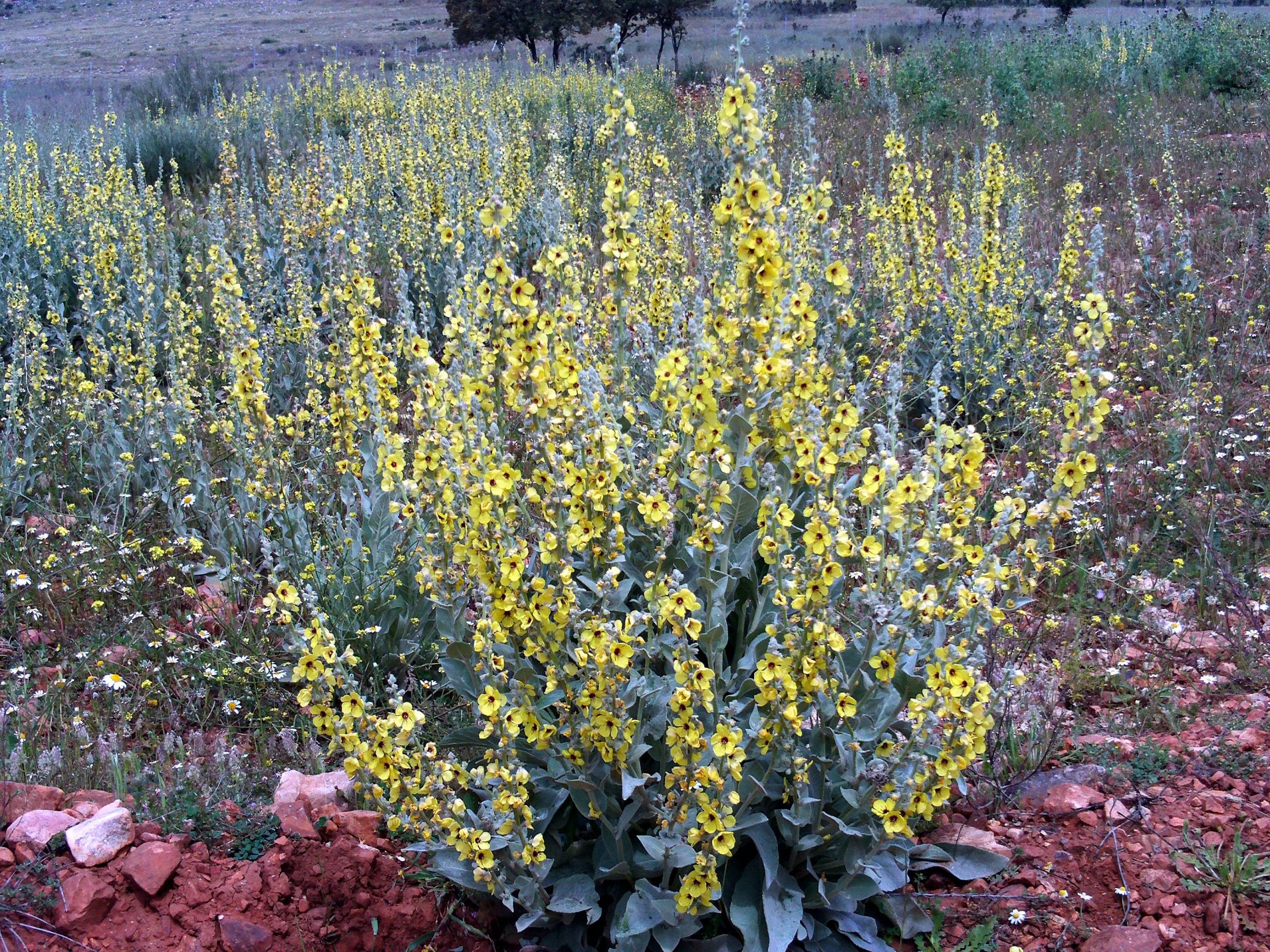
What are the care they require?
If you want to have a copy, we recommend that you provide the following care:
Location
The Verbascum it is a plant that must be outside, full sun. You can put it in semi-shade, but only if it is going to receive a minimum of 4-5 hours of direct sunlight.
Earth
It is not demanding at all:
- Flower pot: universal substrate (for sale here). You don't need to mix it with anything, but if you want to make sure it drains well, mix it with perlite (on sale here), arlita (for sale here), akadama (for sale here) or similar to 30%.
- Garden: grows in all types of soils as long as they have good drainage.
Irrigation
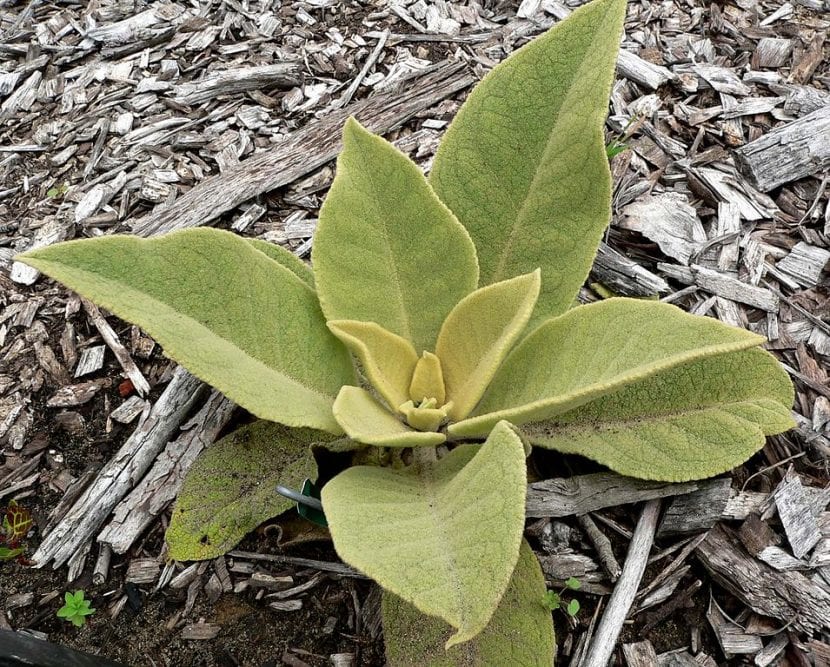
Verbascum epixanthinum // Image - Wikimedia / Stan Shebs
Moderate to low. Water an average of 3 times a week during the summer, and an average of 1-2 times a week the rest of the year. If you have doubts, check the humidity of the soil before, either with a stick, a humidity meter or, if you have it in a pot, weighing it once it is watered and again after a few days.
Avoid wetting the leaves, since otherwise they could burn and / or rot.
Subscriber
From spring to late summer with Organic fertilizers.
Planting or transplanting time
En spring, when the minimum temperature is higher than 15ºC.
Multiplication
The Verbascum multiplies by seeds in spring. For this you have to sow them for example in seedling trays with universal substrate, putting a maximum of two seeds in each alveolus, and finally placing them outside, in full sun.
If you water moderately, ensuring that the soil does not dry out, they will germinate in about 2-3 weeks.
Rusticity
It resists frosts of up to -7 ° C.
What uses are given to Verbascum?
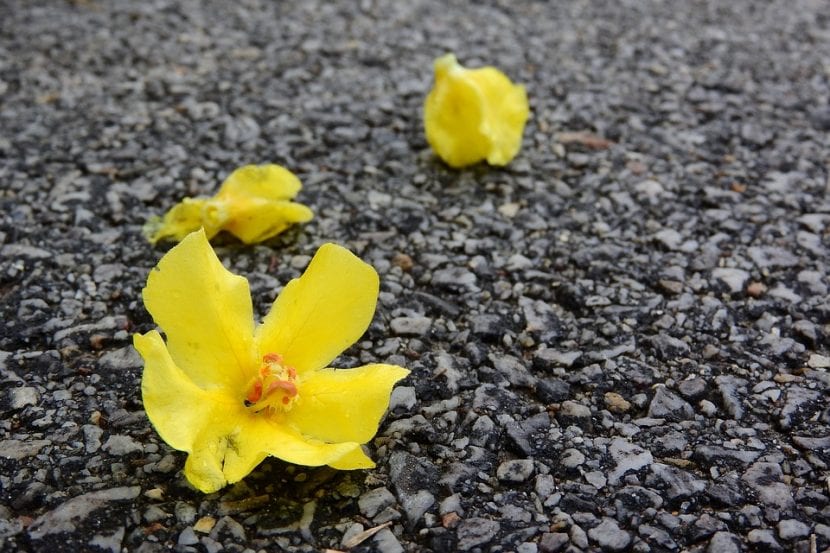
Ornamental
They are very decorative plants, which they look great in gardens and pots. You can plant several together and thus create a spectacular effect 😉, or have them as solitary specimens in different parts of the terrace or patio for example.
Medicinal
Verbascum are used to treat asthma and respiratory diseases. In addition, the extracts obtained from the flowers are used to treat ear infections.
Where to buy?
You can buy seeds and / or plants at a nursery, garden stores, or from here:
What did you think of the Verbascum? 🙂
